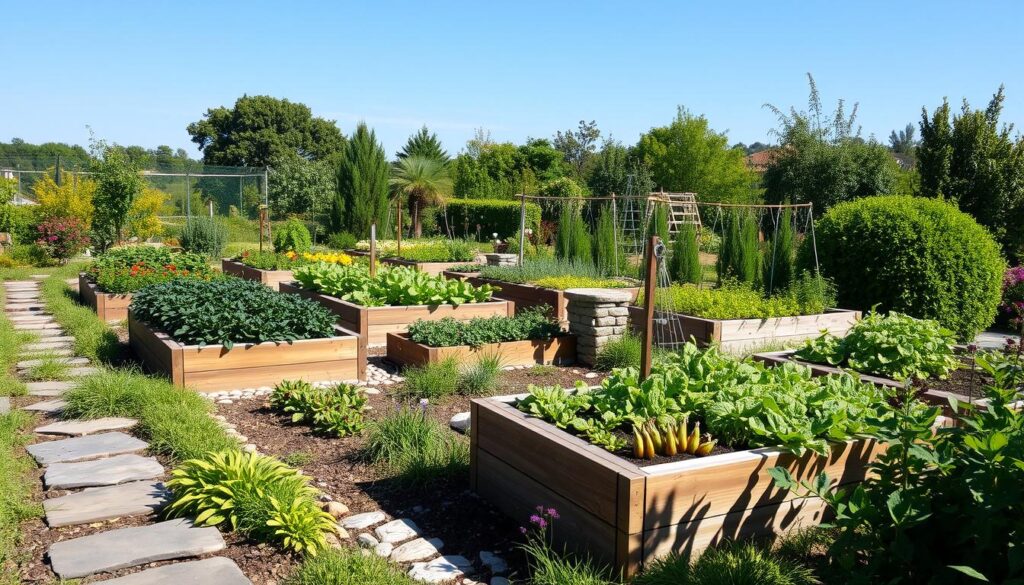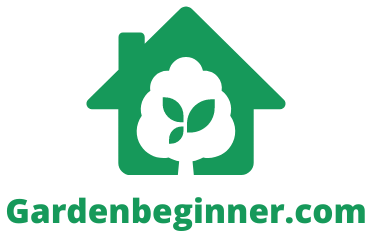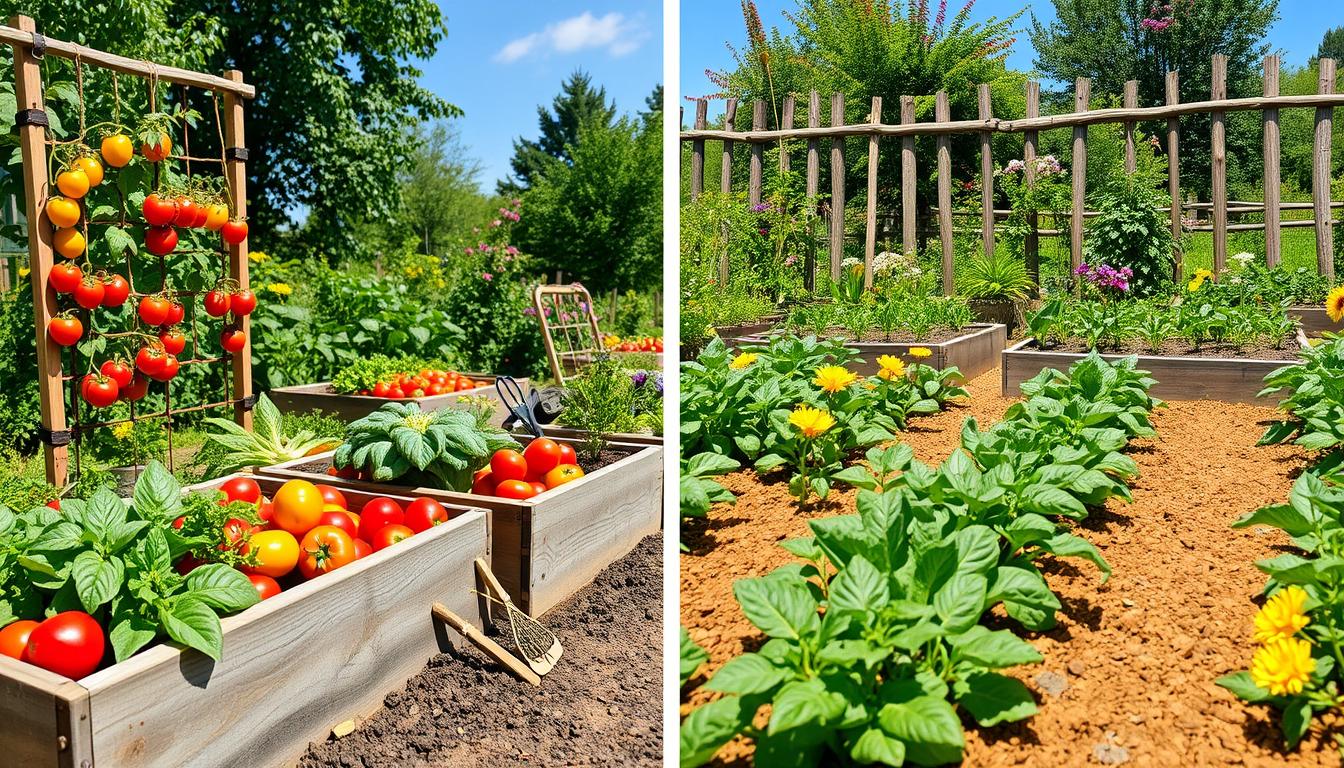I love gardening and have always been curious about the different ways to grow vegetables. Raised beds are neat and easy to reach, while in-ground gardens are big and open. Let’s look at the good and bad of each to help you pick the best for your garden.
Key Takeaways
- Raised beds offer improved drainage, soil quality, and accessibility, but require a higher initial investment.
- In-ground gardening is generally more cost-effective and low-maintenance, but may face challenges with soil contamination and accessibility.
- Evaluating factors like available space, budget, and personal preferences can help you choose the right gardening method.
- Combining raised beds and in-ground gardening can leverage the advantages of both techniques.
- Proper soil preparation, crop rotation, and companion planting can maximize the yield of your vegetable garden, regardless of the chosen method.
Introduction
Vegetable gardening is a rewarding hobby that offers many benefits. It lets you grow your own food and enjoy fresh, healthy meals. It also improves your mental health and connects you with nature.
Let’s look at the benefits of vegetable gardening. We’ll also explore the two main gardening methods: raised beds and in-ground gardens.
Benefits of Vegetable Gardening
Vegetable gardening has many advantages. You can grow your own food without harmful chemicals. This makes your meals more nutritious and delicious.
Gardening also boosts your mental health. It helps you relax, reduces stress, and connects you with nature.
Raised Beds and In-Ground Gardens: A Brief Overview
There are two main gardening methods: raised beds and in-ground gardens. Raised beds are elevated areas that improve drainage and soil quality. In-ground gardens are planted directly in the soil, needing more preparation and care.
Each method has its own benefits and drawbacks. It’s important to choose the best one for your garden based on your needs and preferences.
“Gardening is the art that uses flowers and plants as paint, and the soil and sky as canvas.”
| Feature | Raised Beds | In-Ground Gardens |
|---|---|---|
| Soil Quality | Improved drainage and nutrient-rich soil | Dependent on existing soil conditions |
| Accessibility | Easier access and reduced bending | Potential accessibility challenges |
| Maintenance | Requires initial investment and ongoing costs | Cost-effective and low maintenance |
Understanding the differences between raised beds and in-ground gardens helps you choose the best method for your garden.
Vegetable Gardening in Raised Beds vs. In-Ground: Pros and Cons
Choosing between raised beds and in-ground gardens is key for vegetable gardening. Each method has its own benefits and drawbacks. Knowing these can help you pick the best for your garden.
Raised Bed Gardening: The Pros
- Improved Soil Quality: Raised beds let you create the perfect soil mix. It’s weed-free and contaminant-free, perfect for growing veggies.
- Enhanced Drainage: Raised beds drain better, which is great for areas with bad soil or too much water.
- Reduced Weed Invasion: Raised beds keep weeds out, saving you time on weeding.
- Easier Access: Raised beds are built high, making it easier to care for your plants without bending or kneeling.
In-Ground Gardening: The Pros
- Cost-Effective: Starting an in-ground garden is cheaper. It needs less material than raised beds.
- Larger Growing Space: In-ground gardens can grow more crops and have more space.
- Natural Soil Integration: Plants grown in the ground can reach deeper into the soil for nutrients.
Choosing between raised beds and in-ground gardens depends on your needs and space. Think about what you want to grow and your gardening goals. Weighing the pros and cons of each can guide your decision.
Learn more about the differences between raised beds and in-ground gardens. This can help you understand their unique advantages and challenges.
“The right gardening method can make all the difference in the health and abundance of your vegetable crop.”
Raised Bed Gardening: Advantages
Raised bed gardening brings many benefits to growing vegetables. It improves drainage, soil quality, and makes gardening easier. These changes help the modern homesteader enjoy gardening more.
Improved Drainage and Soil Quality
Raised beds create a perfect spot for plants to grow. They ensure the soil drains well, keeping it healthy. You can also mix the soil to meet your plants’ needs, making it improved soil quality and full of nutrients.
Easier Access and Reduced Bending
Raised beds make gardening easier to access. They reduce the need to bend, making gardening more comfortable. This is great for people with mobility issues or physical limitations. Raised beds help you grow a healthy garden without straining your body.
“Raised bed gardening is a game-changer, offering a host of practical and ergonomic benefits that make vegetable growing a true joy.” – Jane Doe, Certified Master Gardener
In-Ground Gardening: Advantages
In-ground vegetable gardening has its own benefits. It’s a cost-effective and low-maintenance choice for gardeners. This method can be both practical and rewarding.
Cost-Effective and Low Maintenance
In-ground gardening is cheaper than raised beds. You don’t need to buy frames or fill them with soil. You can start right in the ground, saving money.
It also needs less upkeep than raised beds. You don’t have to replace the soil often. This lets you focus on caring for your plants, not the garden’s setup. It’s great for those with little time or energy.
Plus, in-ground gardens handle weather better. They’re less likely to have soil problems or drainage issues that raised beds can face.
In summary, in-ground gardening is a smart choice for those looking to save money and avoid hassle. It’s a simple way to grow your own food without a lot of work.
Raised Bed Gardening: Disadvantages
Raised bed gardening has many benefits, but it also has some downsides. One major drawback is the high cost to start a raised bed system.
Initial Investment and Ongoing Costs
Building a raised bed, whether from wood, stone, or other materials, costs more than tilling a regular garden. The price of materials, soil, and drainage can quickly add up. Also, the ongoing upkeep and replacement of the raised bed can increase long-term costs.
Another thing to think about is the cost of filling the raised bed with good soil or potting mix. This initial cost can be high, especially if you need to fill many raised beds. Even though the soil quality in a raised bed helps plants grow, the initial cost might stop some gardeners.
| Raised Bed Gardening Disadvantages | Key Considerations |
|---|---|
| Initial Investment | Cost of materials, soil, and drainage components for setting up raised beds |
| Ongoing Costs | Maintenance and replacement of the raised bed structure over time |
| Soil Costs | Purchasing high-quality soil or potting mix to fill the raised beds |
Even though raised bed gardening has many benefits, it’s crucial to consider the financial costs. Think about whether this method fits your gardening needs and budget.
In-Ground Gardening: Disadvantages
In-ground vegetable gardening has its perks, but it also has downsides. Two main issues are soil quality problems and getting to the garden can be hard.
Soil Quality and Potential Contamination
Soil quality is a big worry with in-ground gardens. In cities and suburbs, soil might have heavy metals or pesticides. These can harm plants and be bad for health. Fixing these problems can take a lot of time and money, needing soil tests and changes.
Accessibility Challenges
Getting to an in-ground garden can be tough, especially for those with physical issues. It’s hard to bend, kneel, and reach down. This is a big problem for older people or those with mobility problems.
Weeds are also a big issue in in-ground gardens. They’re hard to control, especially for those who can’t move around much. This makes gardening more work and less fun.

Knowing the downsides of in-ground gardening helps gardeners choose the best option for them.
Choosing the Right Option for Your Space
When deciding between raised beds and in-ground gardening, think about what you need and the space you have. Both options have good and bad points. It’s important to think about what matters most to you.
Raised beds are great if you have little space or worry about soil quality. They let you create a perfect growing spot with the right soil and drainage. They also keep pests and weeds away. On the other hand, in-ground gardening is cheaper and easier to care for if you have lots of space and good soil.
Think about these things to pick the best gardening method for you:
- Available gardening space considerations: How much space do you have, and what is the layout of your yard or garden area?
- Soil quality: Is your native soil fertile and well-draining, or does it need significant improvements?
- Accessibility: Do you have any physical limitations that would make it challenging to tend to an in-ground garden?
- Budget: How much are you willing to invest in your gardening setup, both initially and ongoing?
By considering these points, you can decide if raised beds vs in-ground gardening is better for you. Remember, there’s no one solution for everyone. The most important thing is to pick what fits your gardening goals and what you can do.
| Consideration | Raised Beds | In-Ground Gardening |
|---|---|---|
| Space Requirements | Compact and customizable | Requires more open space |
| Soil Quality | Allows for soil improvement | Relies on existing soil conditions |
| Accessibility | Easier access, reduced bending | May be less accessible |
| Initial Investment | Higher upfront costs | Lower initial investment |
The choice between raised beds and in-ground gardening depends on your needs, preferences, and space. By looking at the good and bad of each, you can pick the best way to reach your gardening goals and make your vegetable garden a success.
Maximizing Your Vegetable Garden’s Yield
Growing a vegetable garden is rewarding. There are ways to make it more productive. Crop rotation and companion planting are two key methods to increase your maximizing vegetable garden yield.
Crop Rotation: The Key to Healthier Soil
Crop rotation means growing different crops in the same spot. It keeps the soil healthy and prevents pests and diseases. By changing what you grow, each plant gets the nutrients it needs, and pests don’t get a chance to build up.
Plan your crop rotation by dividing your garden into sections. Rotate the plant families in each section from year to year. This boosts crop rotation and maximizing vegetable garden yield.
Companion Planting: Nature’s Synergy
Companion planting puts different plants together to work better together. Some plants keep pests away, while others help each other grow. This creates a balanced garden ecosystem.
For example, marigolds keep pests away from tomatoes. Lettuce and radishes grow well together, using space wisely. Try different pairings to see what works best for your garden and maximizing vegetable garden yield.
Using crop rotation and companion planting makes your garden thrive. It will give you lots of fresh, healthy food. Try these methods and watch your garden grow more than ever.
Combining Raised Beds and In-Ground Gardens
For gardeners, mixing raised beds and in-ground gardens is a smart move. This blend offers the best of both worlds. It makes your garden versatile and productive, fitting your space and taste.
Start by using raised beds for some plants and in-ground for others. Raised beds are great for plants that need good drainage and easy access. In-ground areas are perfect for bigger, more self-sufficient plants.
For instance, use raised beds for herbs and salad greens. These plants grow fast and don’t need deep roots. For bigger plants like tomatoes and root vegetables, choose in-ground areas. They need more space and can handle deeper roots.
| Raised Beds | In-Ground Gardens |
|---|---|
| Ideal for delicate, high-maintenance crops | Suitable for robust, deep-rooted vegetables |
| Improved drainage and soil quality | Lower maintenance and cost-effective |
| Easier access and reduced bending | Potential for soil contamination |
By mixing raised beds and in-ground gardens, you get a balanced and productive garden. This way, you can meet the needs of all your plants. Your garden will flourish, giving you a great harvest.

“The key to a successful vegetable garden often lies in finding the right balance between different growing methods.”
Choosing between raised beds, in-ground gardens, or both depends on your space, budget, and preferences. By weighing the pros and cons, you can tailor your garden. This will make your growing season fruitful and fun.
Conclusion
Choosing between raised beds and in-ground gardening depends on your needs and preferences. Each method has its own advantages and disadvantages. By considering factors like soil quality and maintenance, you can pick the best option for your garden.
Whether you prefer the ease of raised beds or the cost-effectiveness of in-ground gardening, choose what fits your lifestyle. Understanding the differences between these methods helps you create a garden that’s both productive and enjoyable.
Starting your vegetable garden is an exciting journey. Remember, you can always change your approach as you learn more. The most important thing is to have fun and enjoy growing your own food.



Leave a Reply